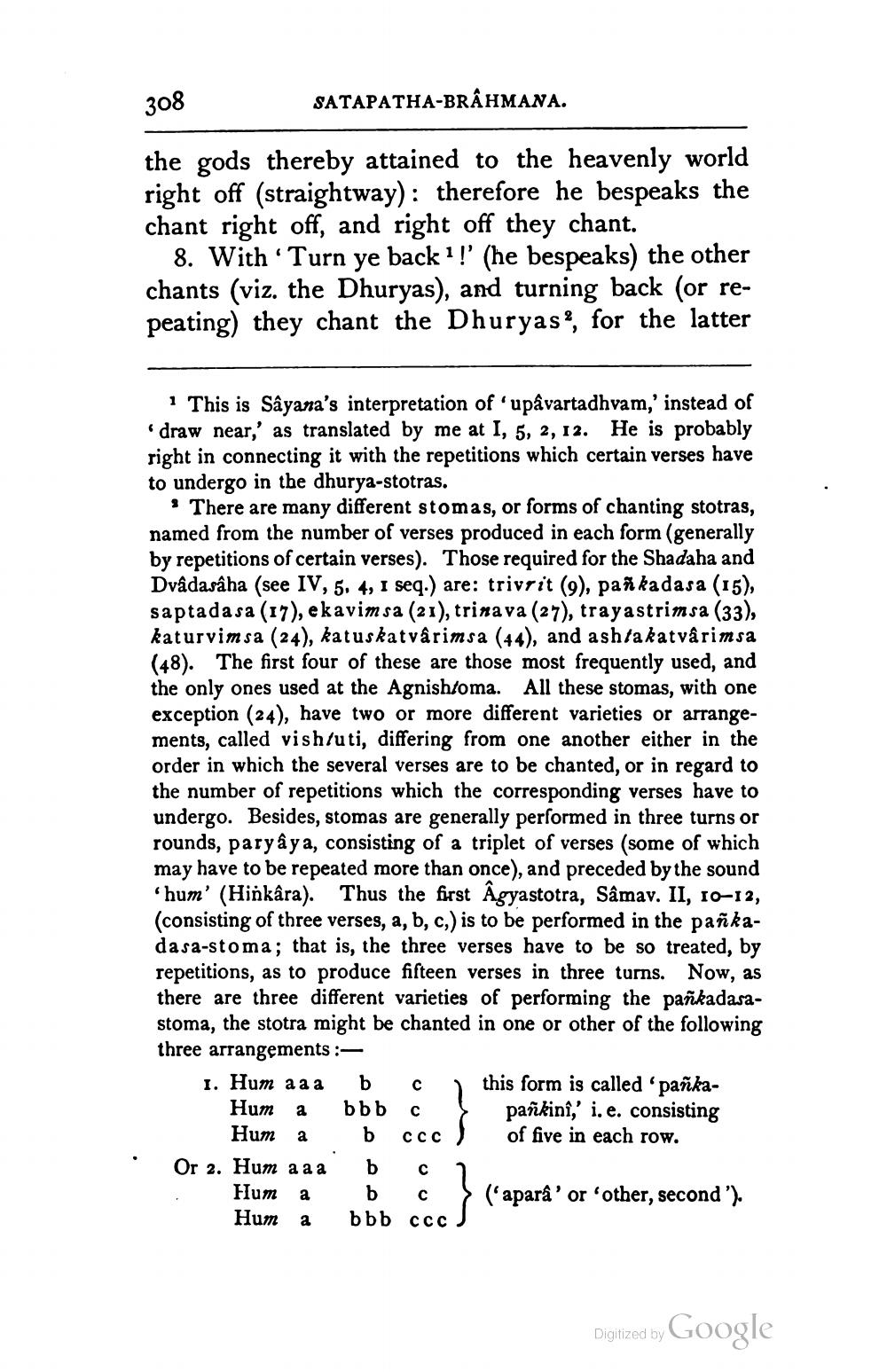________________
308
SATAPATHA-BRAHMANA.
the gods thereby attained to the heavenly world right off (straightway): therefore he bespeaks the chant right off, and right off they chant.
8. With 'Turn ye back ?!' (he bespeaks) the other chants (viz. the Dhuryas), and turning back (or repeating) they chant the Dhuryas, for the latter
1 This is Sâyana's interpretation of upâvartadhvam,' instead of draw near,' as translated by me at I, 5, 2, 12. He is probably right in connecting it with the repetitions which certain verses have to undergo in the dhurya-stotras.
There are many different stomas, or forms of chanting stotras, named from the number of verses produced in each form (generally by repetitions of certain verses). Those required for the Shadaha and Dvadasâha (see IV, 5, 4, 1 seq.) are: trivrit (9), pan kadasa (15), saptadasa (17), ekavim sa (21), trinava (27), trayastrimsa (33), katurvimsa (24), katuskatvarimsa (44), and a shtakatvarimsa (48). The first four of these are those most frequently used, and the only ones used at the Agnishtoma. All these stomas, with one exception (24), have two or more different varieties or arrangements, called vish/uti, differing from one another either in the order in which the several verses are to be chanted, or in regard to the number of repetitions which the corresponding verses have to undergo. Besides, stomas are generally performed in three turns or rounds, paryaya, consisting of a triplet of verses (some of which may have to be repeated more than once), and preceded by the sound 'hum' (Hinkâra). Thus the first Ägyastotra, Sâmav. II, 10-12, (consisting of three verses, a, b, c,) is to be performed in the pankada sa-stoma; that is, the three verses have to be so treated, by repetitions, as to produce fifteen verses in three turns. Now, as there are three different varieties of performing the pañkadasastoma, the stotra might be chanted in one or other of the following three arrangements : 1. Hum aa a b
this form is called 'pañkaHum a bbb c pankini,' i. e. consisting
Hum a b ccc) of five in each row. Or 2. Hum a a
Hum a b c (apara' or 'other, second'). Huma bbb ccc
Digitized by Google




